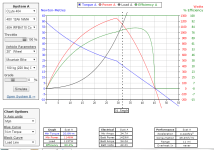apmorgan93
100 µW
On a hub motor, what would be the difference between a 48v 40a setup when compared to a 72v 30a. They're both roughly 2000w (give or take a little bit). I from what I've read while lurking here over the last few months that higher volts lead to top speed and amps lead to torque, but I don't know to what extent.
This is my first post here BTW! I'm building what will hopefully be my first EV (well second I suppose) and am trying to answer questions I havn't been able to answer through google and lurking around on here. I love this site, so much helpful content.
This is my first post here BTW! I'm building what will hopefully be my first EV (well second I suppose) and am trying to answer questions I havn't been able to answer through google and lurking around on here. I love this site, so much helpful content.



